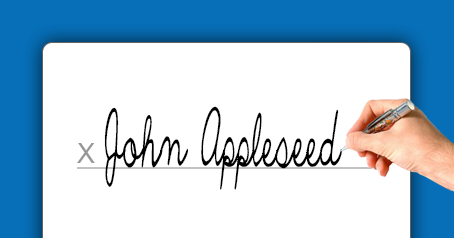
Should the clients send the dispute letters themselves?
No no no! As a credit repair specialist, your clients are paying you a monthly fee to do 2 simple things:
- To send dispute letters for them.
- To teach them how to better manage their credit.
Let’s do the math:
- The letters take just a few clicks to create.
- The actual “work” is just a few minutes per month per client.
- If the average client is paying you $59-$129 per month.
- And you’re just paying for paper, envelope and stamps.
- That’s a nice profit margin!
Having your clients send the dispute letters themselves is not a good idea because that means you’re not providing much of a service. Also, most clients cannot handle this responsibility. With that business model, you’ll end up with angry clients who don’t understand why they are paying you.
The better solution is to be awesome and provide awesome service. That’s how you gain referrals and grow your business.
But what about having the client sign the letters?
Dispute letters need a real signature. To save time, many companies have the clients sign a limited power of attorney (or the “Authorization for Credit Repair Action” that’s already included in your default online agreement) and then they sign the client’s name for them.
Here’s what most companies do:
- (Recommended) If your client has signed the “Authorization for Credit Repair Action” (this is already in your default online agreement) you simply sign the client’s name on their behalf. The client is paying you for “Document Processing” and “Credit Repair Education” so why not just send the letter for them? This is definitely the better way to go. It’s a nice service for your client and the price of a stamp is minimal.
- (alternate method) If you trust your clients to sign the letter themselves, you can send the letter to the client. Export it as PDF and attach it to an email (your own email) or attach it to a secure message from the client’s dashboard. Keep in mind, this is problematic, as you’re depending on a client who may not handle this responsibility well (not recommended).
What to include:
For a Round 1 letter: Be sure to include (1) Photo ID (like a driver's license) and (2) Proof of Address (usually a utility bill or something official with your name and address). Later rounds don't need this.
What other forms of ID and Proof of Address are acceptable?
Driver's License, State ID Card, Bank or Credit Union Statement, Cancelled Check, Government Issued ID Card, Signed Letter from a Homeless Shelter Stamped Post Office Box Receipt, Utility Bill ( Water, Gas, Electric or Telephone) pr a Pay Stub.
When providing these two (2) forms of qualified documents, please be sure that they are not older than 2 months. State issued ID's must be current with the current address listed, if you're using the ID as proof of address.
Should it be sent certified mail?
Many people do send these by Certified mail. Many do not. This is up to you. It’s not required, but does give a awesome paper trail.
What return address should be on the envelope?
The address on the envelope and the letter will be your client’s address.
How will I know when changes happen?
The credit bureaus and creditors will send their replies directly to your client. Ask your client to forward all correspondence to you so you can keep their records up to date. Once you’ve received an update about an item, click here to learn how to update that item in your software.
Hopefully this cleared up the mystery about who signs the letters. Thanks for reading!
Want more? Check out our recipe for a sucessful credit repair business.













